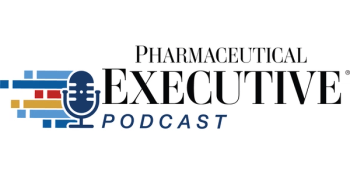
Inside J&J’s Strategy to Ease Burnout for Oncology Professionals
Biljana Naumovic, US President, oncology, solid tumor, Johnson & Johnson Innovative Medicine, shares how the company is supporting cancer care teams through timely education, community-based trials, and tools to manage complex treatment transitions.
In an interview with Pharmaceutical Executive, Biljana Naumovic, US President, oncology, solid tumor, Johnson & Johnson Innovative Medicine, discussed how the company is responding to growing challenges in cancer care revealed by its Oncology Care Index. With 76% of healthcare providers reporting feeling overwhelmed by the pace of innovation, the index offers critical insights into the barriers physicians face when translating breakthroughs into clinical practice. Naumovic outlined how J&J is using these findings to drive meaningful support for oncologists—through enhanced research access, community-based care models, responsible integration of AI, and targeted efforts to reduce cognitive burden across the care continuum.
Pharmaceutical Executive: How is J&J addressing burnout and cognitive overload among oncology providers who are navigating rapidly changing treatment landscapes?
Biljana Naumovic: We’re addressing this in several ways, many of which we’ve already touched on. One key area is ensuring that information for physicians is delivered in a timely manner and within the broader context of what's happening in the field. Education and continuing medical education (CME) programs are critical. Physicians have emphasized the importance of receiving data and insights not only quickly but also in a way that helps them meaningfully interpret and apply the information in practice.
We’re also placing a strong focus on educating advanced practice providers and nurses, who are essential to delivering comprehensive patient care. We're helping them better understand how to manage patients effectively and support them throughout their treatment journeys.
In addition, we're enhancing support across the continuum of care, including increasing access to clinical trials by working more closely with community providers. This allows patients to receive cutting-edge treatments closer to home, which is often the best option for those living with cancer.
Another major area of focus is care transitions. In multiple myeloma, for instance, patients are often receiving fourth-, fifth-, or even sixth-line therapies and transitioning between academic centers and community practices. We’re supporting this process through training, onboarding, and treatment enablement efforts to ensure that these often complex therapies can be both initiated and sustained within the community setting.
Full Interview Summary: Johnson & Johnson (J&J) launched the Oncology Care Index to better understand the mounting pressures oncologists face amid rapid innovation—highlighting that 76% of healthcare providers feel overwhelmed. In 2024 alone, the FDA approved 50 new indications and 11 new molecular entities, underscoring the urgent need to translate breakthroughs into practical care. J&J uses the index not as a self-promotional tool but as a catalyst for industry-wide dialogue around care delivery, implementation of innovation, and systemic barriers.
Two insights from the index stood out: the difficulty community oncologists face in accessing clinical research and the fragmentation in the continuum of care as patients transition between treatment centers. To address these, J&J is expanding access to community-based clinical trials and co-developing protocols with community providers, particularly in areas like multiple myeloma and lung cancer. They're also pushing for policy changes that support non-academic trial sites. At the same time, the company is investing in training and infrastructure to ensure continuity of care and appropriate treatment closer to patients’ homes.
J&J sees artificial intelligence (AI) as a major opportunity to alleviate provider burden but acknowledges that true adoption requires collaboration across the ecosystem. The company is leveraging AI to improve trial recruitment and streamline decision-making but stresses the need for open, connected databases and industry-wide alignment.
To combat burnout and cognitive overload, J&J is focused on delivering timely, contextualized education and CME programs, supporting advanced practice providers and nurses, and enhancing patient support services.
Looking ahead, J&J hopes to see decreased provider overwhelm and more seamless integration of innovation into care, driven by empowered community oncologists, improved transitions of care, and greater engagement of frontline healthcare workers in both research and treatment delivery.
Newsletter
Lead with insight with the Pharmaceutical Executive newsletter, featuring strategic analysis, leadership trends, and market intelligence for biopharma decision-makers.




